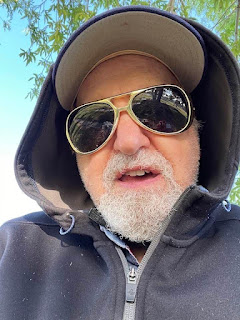After I write a post, I often check the tally to see how many posts I've written in total for the year, and compare it to where I was 12 months ago. Most of the time, those numbers are relatively close. Sometimes, I catch up or figure I will within a months time, or before the year is out.
But I really fell hard off the wagon in November, writing one piece and then disappearing from this spot. This month, as you can see below, I finally posted my lost article on Steve Tintweiss. Beyond that, nothing.
Part of the reason for no blog content is related to some good news. I started freelancing for New York City Jazz Record. My debut had me hit the ground running: I was assigned to write three reviews for the December issue, each one on two albums, with a pretty quick turnaround. (I don't know how other scribes do it, but I'm used to giving an album several listens, and scribbling some notes before I start on a review. Call me crazy.) There was a bit of scrambling going on in preparation (mostly internally) but I got it done. And I even went back and wrote a few things for the January issue of NYCJR too.
November was also a big music month for me. On Friday the 10th, I made it to Brillobox in time to catch Creedmoors, who released one side of a split single on Igor Records (my label) earlier this year. This was the band's third show since their debut at the release party earlier this year and on this night, they really sounded like A BAND. What I mean by that was that they were all working in unison, playing songs in which they had worked on parts that took the song's concept and elevated it, as opposed to being four people on stage playing the singer's songs, adding their thing to it and just having a good time. Not that I have anything against the latter approach, which can be a blast as well. But virtually every song in Creedmoors' set felt like it could be on album - a good album.
Unfortunately, the timer was set on my phone camera and in the pic above, bassist Mike Athey and guitarist Tammy Wallace both look like they were under a sun lamp too long. But this was a good group action shot. Gato Gateau and the Hi-Frequencies both played that night also, but since I was coming from my work, I missed all but the last minute of the Hi-Freq's set.
A week later, the Harry Von Zells, my current band, finally played another show since the record release, which we did with Creedmoors. We have a firm new lineup, with my former workmate Erik Worth joining us on Moog. He really adds some extra energy, not to mention sonic wildness, to what we do and it was really great to actually have people cheering and whooping for us.
I don't have any pictures of the HVZs but here are shots of the other bands on the bill, Frazé-Frazénko & the Happy Lovers, who combined stark, brittle post-punk with an adventurous jazz rhythm section.
I took out an ad in the long-standing magazine The Big Takeover and they also found someone to review the Harry Von Zells album in the same issue. That arrived in the mail at the beginning of December. The review really blew me away because it's not often that someone seems to have really listened to my songs, or at least given them a cursory listen while checking out the lyric sheet to see what I'm talking about, and critiquing what they hear. The writer compared my voice to Stan Ridgeway (Wall of Vooddoo) and Keith Morris (Circle Jerks) - which I think is pretty on the money. I'll take it!
After all that, one might think I'd be inspired to do more blogging, digging into this pile of music that surrounds me and - while not thinking that I can get ahead of it - just simply getting thoughts out about a few things. But it's been hard. Not simply to find the time but to find the focus to do it. Especially after the demise of that other jazz magazine where I freelanced for over two decades, my confidence is a little shaky. As I came up with the reviews for NYCJR, I was worried that my style or thoughts might not fit in with their other writers. (My reviews all ended up running with little or no changes to them, so perhaps I was overthinking it.)
Blogging always feels like something I should be doing only after all the real important things are out of the way, like laundry and the dishes and vacuuming. Sometimes I feel like I have ADD while writing because I get lured away from the keyboard by the least little things, and it can often take a whole afternoon to get a post together.
But, looking back at a post from almost this exact week last year, I was lamenting in almost the same way about all this stuff, and that time, the feeling wasn't part of a longer post that started with a tale of musical journeys like this one did. So perhaps I need to just remind myself that I got through this slow period once before, so just do it again. And I should quit writing about not being able to write. There are better subject to cover.

























.webp)







